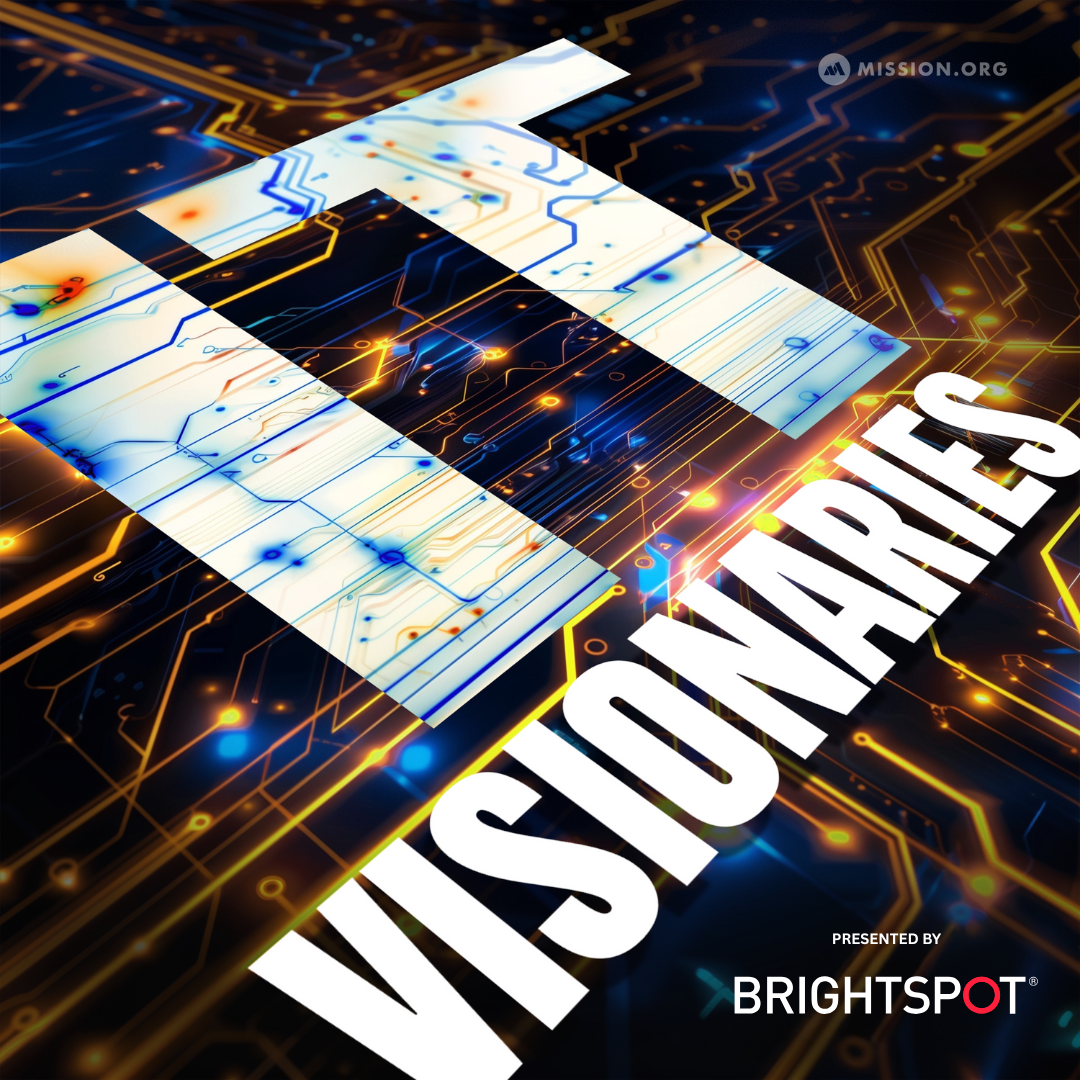Or listen in your favorite podcast app
Apple Podcasts / Google Podcasts / Stitcher
From studying neuroscience to living on the ski slopes to finding a home at Panasonic, Kellen Pucher’s journey has been a one with many twists and turns. But today, Kellen is settled in as a Director of Strategic Initiatives at Panasonic North America. Right now, Panasonic is working on deploying the world’s first connected vehicle ecosystem and Kellen is helping lead the team that’s building the technology necessary to make it work. He explains all the intricacies of the task and the larger goal of the program on this episode of IT Visionaries, hosted by Mission producer Hilary Giorgi.
Best Advice: “Cast a wide net and have your ear on. You’ve got to get out and interact with as many people as possible. Very few of the best partnerships that we’ve had have come as the result of being in an office or hiding behind your email. It’s all about shaking hands, getting out to conferences, interacting with the folks that are really pushing the envelope as it relates to the near future and how their ideas are set to impact.”
Key Takeaways
- There are hidden costs of transportation
- If you connect all vehicles and other elements of transportation like traffic lights and road signals, the amount of data being generated will need an entirely new operating system to populate through
- Privacy and security are built into all vehicle technology
Panasonic’s connected vehicles
Kellen says that the current state of transportation is “challenging.” There are many hidden costs to transportation that people often don’t consider, including safety and congestion. The work that Panasonic is doing is aiming to address those hidden costs. Eventually, there will be autonomous cars and a new transportation system, but before you can get there, you need to put advanced technology into the forms of transportation we currently have. To do that, Panasonic is using the V2X (vehicle to everything) platform to create a two-way connection between cars and a broader network, and an operating system to figure out what to do with all the data that is being collected and transferred on the network.
“Looking at congestion as a problem in 2000, we as a country spent about 5 billion hours in just urban traffic congestion in the U.S. And if you fast forward those two decades to 2019, or about now, you’re much closer to 9 billion hours wasted. For every billion hours that we as a nation collectively waste, that’s roughly equivalent to 1,500 human lives worth of hours that we’re effectively just wasting through inefficiency in the system.”
“Transportation is a historically analog system. And so, when we talk about transportation, I think it’s just absolutely ripe and ready for a true positive digital disruption.”
“The real theory here and the hypothesis behind connected vehicle technology —or V2X as we call it, which means vehicle to everything technology — is can we as an industry standardize all of the data that’s coming from those sensors that are already on the vehicle today and create a two-way communication so the car is both sharing and receiving data with a broader network, but also with other vehicles that are driving nearby. And can you standardize that throughout the industry so that you can capture benefit regardless of what make and model you choose to be driving?”
“What Panasonic is really very focused on is beyond just the hardware for what goes in the vehicle and what goes on the roadside. What are you going to do with all of that data? We need a new operating system. So what our division is really working on is a next-generation traffic operation system.”
The CIRRUS platform
Kellen describes the CIRRUS platform as the “central brain” for all of the connected transportation data being collected. Due to the evolution of the transportation industry, cars and other vehicles are now being offered that have connected technology included as part of the standard package. All of the data that technology generates creates an insurmountable amount of information to analyze and then utilize to further the industry. A resilient platform that can scale is necessary to keep moving the ball forward, and that is what Panasonic is building with CIRRUS.
Forming partnerships
Whether it’s with cities like in Utah or with automakers, Panasonic knows that the future of transportation is very much dependent on the partnerships they create with other stakeholders.
“Both the automakers and Panasonic are interested in capturing that safety benefit and efficiency benefit of connected vehicle technology.”
The privacy question
With more technology being implemented in all of our vehicles, the natural question is how do we make sure the data and technology can remain protected? According to Kellen, privacy controls are built into the design of the systems so that no personal information can ever be transmitted. Currently, the technology is built to aggregate sensory data rather than focus in on the driving metrics of anyone in particular.
“Privacy is absolutely critically important and it’s really important to understand that there is actually privacy baked into the standards for how we broadcast this data….All the data that we’re collecting is really sensor set data that’s in the vehicle that’s telling us about what’s happening from an operation standpoint in and around the vehicle….If you’re rolling off the lot today, you’re going to benefit from it, but you’re really sharing with us data that we’re going to aggregate. We’re not looking at a single thing about any one particular driver, for example, to enforce speed control or something like that or to ticket you. That’s not really part of it. And frankly, it’s not really possible, at least not without opting in and identifying yourself to the system.”




